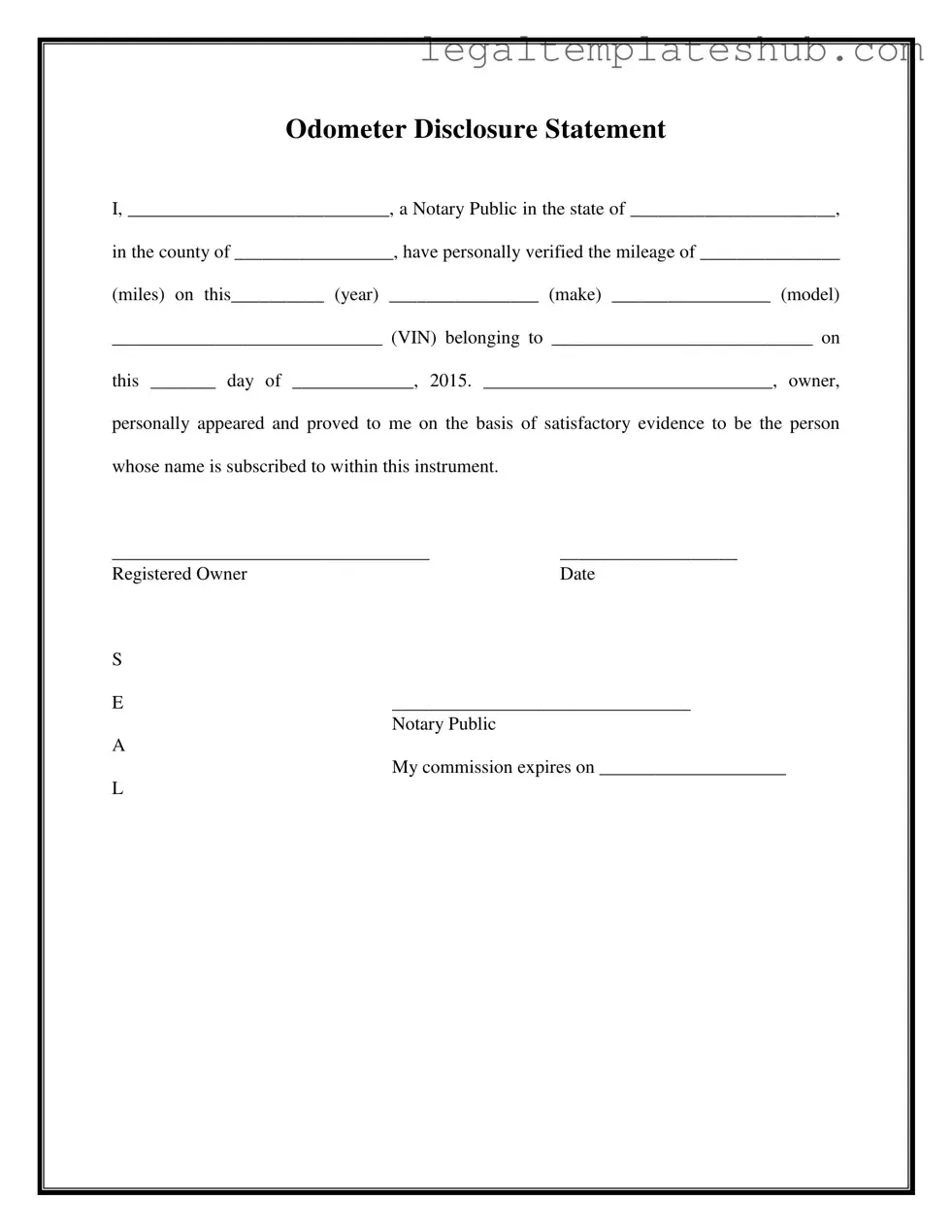Instructions on Filling in Notarized Odometer Statement
After you have gathered all necessary information, it's time to fill out the Notarized Odometer Statement form. This document is essential for confirming the mileage on a vehicle during a sale or transfer. Follow these steps carefully to ensure accuracy and completeness.
- Begin by writing your name in the first blank space, where it says "I, ____________________________."
- In the next blank, indicate the state where you are a Notary Public.
- Fill in the county where you are located.
- Next, enter the mileage of the vehicle in the blank labeled "_____________ (miles)."
- Provide the year of the vehicle in the "__________ (year)" section.
- Write the make of the vehicle in the "_______________ (make)" blank.
- In the "_________________ (model)" space, specify the model of the vehicle.
- Enter the Vehicle Identification Number (VIN) in the "_____________________________ (VIN)" field.
- Write the name of the registered owner in the "belonging to ____________________________" section.
- Fill in the date of the notarization in the "______ day of _____________, 2015" area.
- Have the registered owner sign their name in the space labeled "______________________________, owner."
- In the next blank, the registered owner should write the date of signing.
- As the Notary Public, sign your name in the space provided at the bottom of the form.
- Finally, indicate the expiration date of your commission in the "My commission expires on ____________________" section.
Once you have completed the form, ensure that all information is accurate. You may then proceed to have the document notarized, which will give it legal validity. Keep a copy for your records and provide the original to the relevant parties involved in the vehicle transaction.
